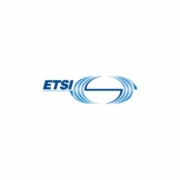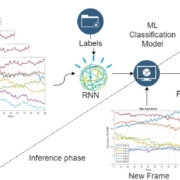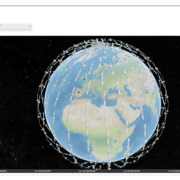5G-SPECTRA: Satellite Performance Evaluation for Coexistence with Terrestrial Radio Applications
In answer to the European Space Agency’s (ESA) invitation to tender looking into the radio specification studies for 5G non-terrestrial networks (NTNs), 5G-SPECTRA is a project that is undertaken by Magister Solutions in partnership with Satellite Applications Catapult and the University of Surrey in England. In this project Magister will develop simulation tools for evaluating more specifically how satellites can best coexist with terrestrial 5G.
With already almost three years’ experience of working on 5G NTN standardisation and simulation support, Magister has a head start with 5G-SPECTRA. The project follows on quite nicely from the ALIX project that ended in July 2022; concerning a simulator for 3GPP standardisation of 5G NTN, especially because it involved a spin-off project looking specifically at TN/NTN radio frequency coexistence. But what does coexistence exactly mean here?
“It means that terrestrial (TN) and NTNs can coexist and overlap not only in the same geographical coverage area,” Magister’s CEO Jani Puttonen replies, “but also on the same or adjacent radio frequency.”
Within 5G-SPECTRA, the Catapult and the University of Surrey will identify coexistence interference scenarios, frequency bands, and network use cases, while Magister will develop the simulation tools to analyse these scenarios. The simulation results are targeted to be contributed to 3GPP Technical Specification Group Radio Access Network (TSG RAN), RAN4 related RF specifications.
Better coverage with coexistence
Coexistence has become an increasingly pressing issue as more of the satcom industry turns away from geostationary satellites to non-geostationary (NGSO), e.g. low-earth orbit (LEO) satellite constellations.
“There is a significant propagation delay with a geostationary satellite orbiting at 36,000km” Jani points out. “That’s why they’re bringing in these LEO constellations, the delay is much shorter and the localised capacity greater, but they require hundreds of satellites to have constant coverage of the same area.”
Coexistence needs to be addressed because these LEO satellite constellations are not geostationary. At one point, they might be over areas of high traffic demand that already have terrestrial network (TN) coverage, in which case they would complement the TN capacity. At another point, however, they might be over an area where there is no TN (e.g., sea or mountains), in which case they would provide all the capacity, i.e. “fill the gaps” of TN coverage.
“Without regulatory and standardisation efforts that allow NTNs to coexist with TNs, there simply won’t be any 5G NTN-based satcom systems,” Jani states bluntly.
“TN stakeholders won’t allow 5G NTNs to be developed if they are going to interfere with existing networks. Currently, TN stakeholders have their own simulation tools, but the satcom industry players necessarily do not. Magister aims to provide the satcom industry with its own simulation tools so they can independently evaluate the various coexistence scenarios”.
Co-channel coexistence (where networks use the same frequency band) is usually determined by regulatory bodies which specify the locations and other constraints for satcom systems using specific frequencies. But it is another kind of coexistence, where networks are using adjacent frequency bands that Magister is now more focused on.
“You might think there would be no interference if they are on neighbouring frequencies,” Jani adds, “but in fact there will be leakage because of non-ideal RF filters.”
The simulation results will help in standardisation
Magister simulates scenarios for different kinds of NTN and TN scenarios to see the extent of the adjacent channel interference in various situations.
“From these simulation results, we would then be able to define a set of constraints to ensure that the magnitude of interference is not too high to cause significant performance loss,” Jani explains. These simulation results shall be shared with the standardisation bodies that will decide on the specifications for 5G NTN radio performance.
“The SPECTRA project shall nicely continue our previous TN/NTN coexistence simulation studies,” Jani points out.
“Previously, we focused on TN/NTN coexistence scenarios in FR1 (2-6GHz) for handheld mobile devices, however in 5G-SPECTRA we will complement these by either focusing on scenarios in FR1 for IoT devices or in FR2 (20-30GHz) for directional terminals. Throughout the course of the project, we will compare these two alternatives and decide which will be the most useful to focus on, even though our simulation tools could eventually be used for either,” Jani adds.
The results from the previous simulation project (TN/NTN coexistence in FR1/handheld) were published in the Advanced Satellite Multimedia Conference (ASMS) conference last autumn: 5G and Beyond NTN Systems – 11th Advanced Satellite Multimedia Conference | 17th Signal Processing for Space Communications Workshop (asmsconference.org)











